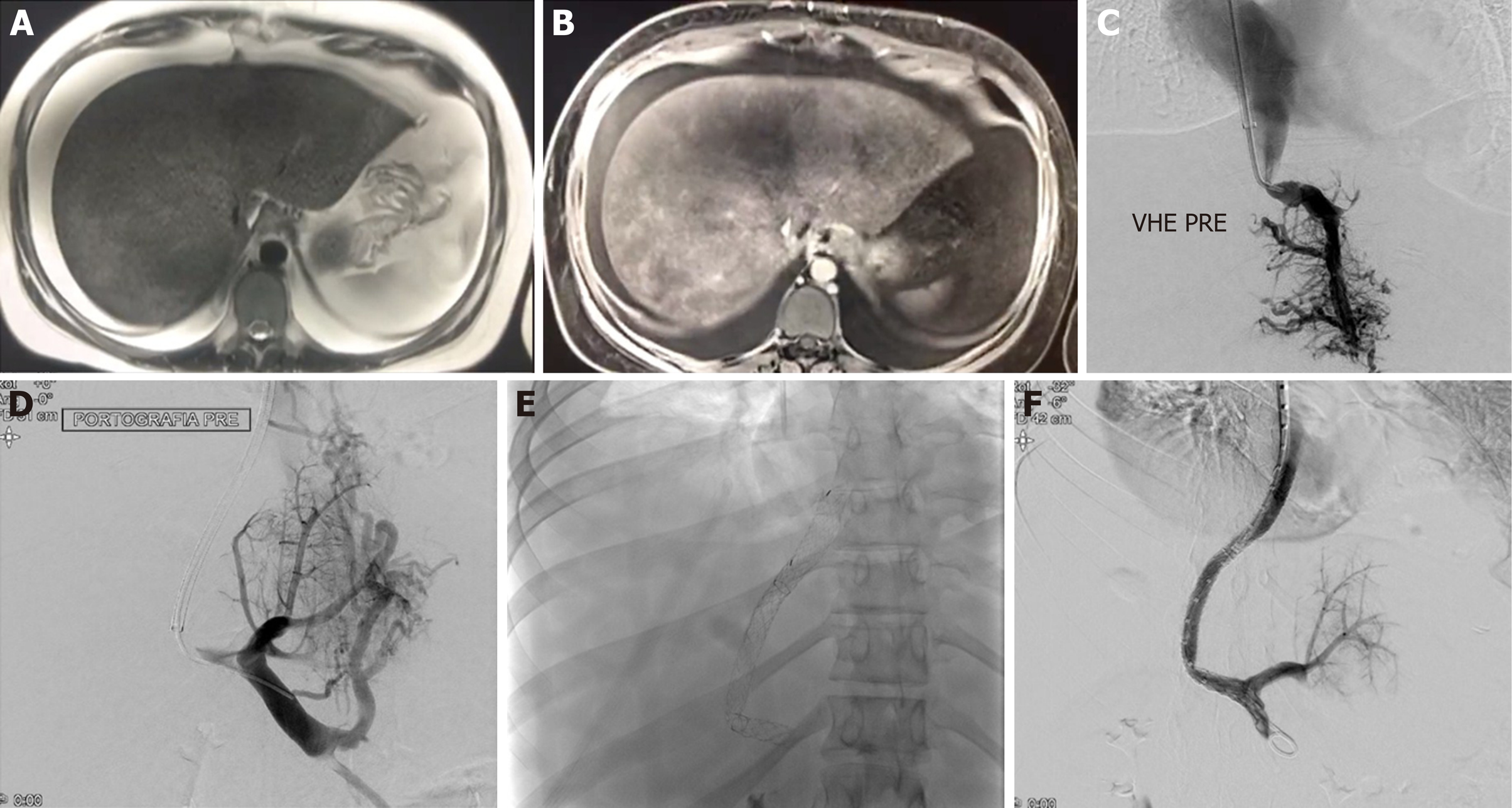Copyright
©The Author(s) 2020.
World J Gastroenterol. Sep 14, 2020; 26(34): 5060-5073
Published online Sep 14, 2020. doi: 10.3748/wjg.v26.i34.5060
Published online Sep 14, 2020. doi: 10.3748/wjg.v26.i34.5060
Figure 1 Twenty-nine years old girl with Budd-Chiari syndrome and leiden factor V positive for heterozygote.
A: Gadolinium-enhanced T1-weighted magnetic resonance image (MRI) obtained during arterial phase. Hyperintense structures represent portal venules, which are visible because of postsinusoidal portal hypertension; B: T2-weighted MRI shows hyperintensity ascites and splenomegaly; C: Using a Rösch-Uchida transjugular liver access set, a small collateral hepatic vein branch was accessed, the portal vein was punctured (D), and wire access into the superior mesenteric vein was achieved. A 10-mm diameter, 6-cm long Viatorr stent (W. L. Gore and Associates, Flagstaff, AZ, United States) was deployed, extending from the right portal vein to the inferior vena cava (E, F).
- Citation: Inchingolo R, Posa A, Mariappan M, Tibana TK, Nunes TF, Spiliopoulos S, Brountzos E. Transjugular intrahepatic portosystemic shunt for Budd-Chiari syndrome: A comprehensive review. World J Gastroenterol 2020; 26(34): 5060-5073
- URL: https://www.wjgnet.com/1007-9327/full/v26/i34/5060.htm
- DOI: https://dx.doi.org/10.3748/wjg.v26.i34.5060









